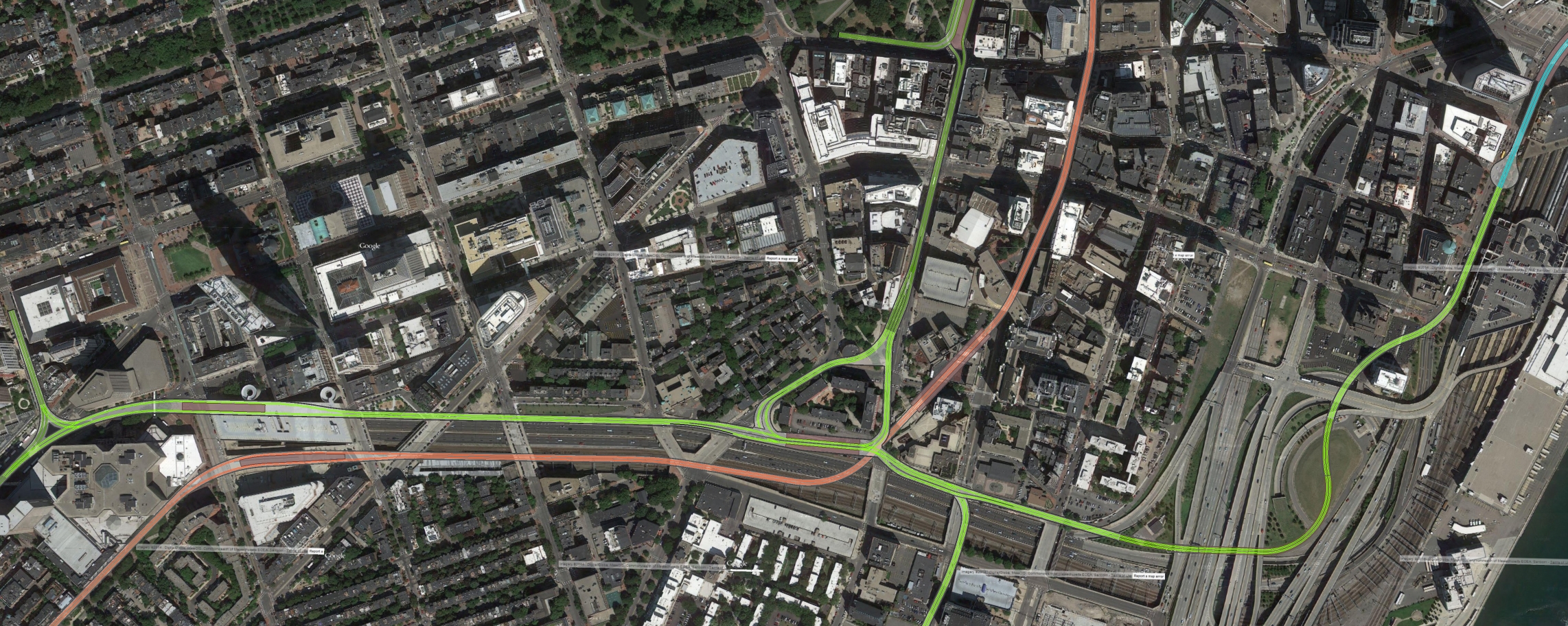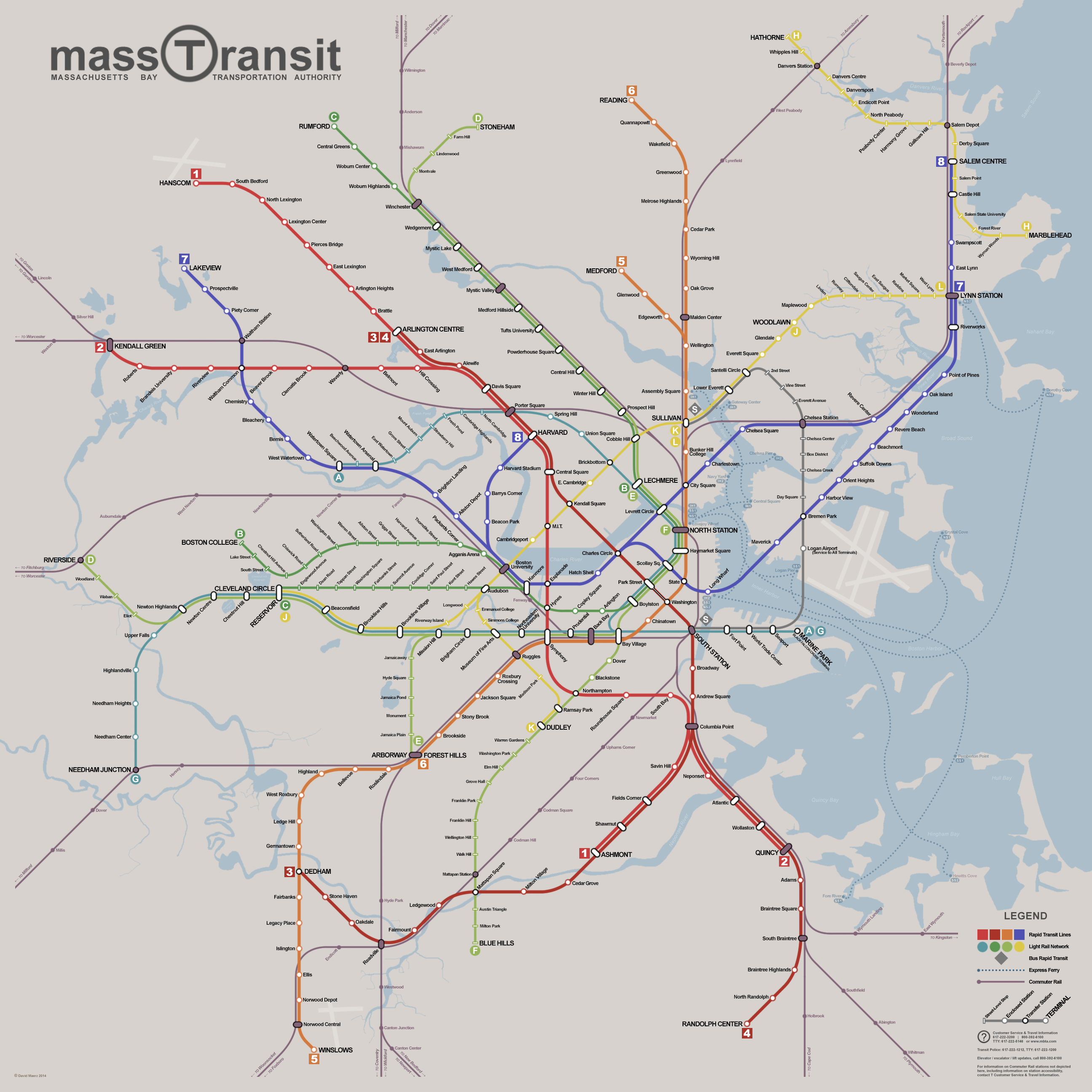So the thread peters out around where the portal is feasible for connecting with South Station/emerging from under I-93. I'm curious if there's been any further thought on exactly how this might be done?
As Busses said, we can't pin down exactly where all the underground infrastructure is there without an official survey. I'm pretty sure my location is accurate as I based it off an official MBTA report I found, but it could have been outdated. I also have no idea where all the tunnels for I-93 and the associated ramps are, but I'm sure there is some way to shoehorn a ~30' wide tunnel through there. IIRC, the allston interchange project got announced right around then too.
Let me understand the logistics of the davem and F-Line proposals (and omitting the Huntington connection, for now and assuming only a transitway extension). From what I see from the images:
- trains coming from Dudley would join the rest of the Green Line at Boylston and keep going north
- trains coming from the west stay the same, as stated, so you transfer to get to the Seaport, but
- some trains coming from Lechmere would split off at Boylston and head either south to Dudley or east to Seaport?
- it does not look like there would be a Dudley-Seaport direct line, sans transfer
Yes, yes, yes and yes. Additionally, trains could loop at Bay Village and head back north. Really, all this is doing is reopening Boylston and the Tremont Tunnel to it's originally designed capacity.
Obviously an official survey would have to be done, but "seat of pants" I just don't think there is/will be much of a demand for Dudley-Seaport. It's part of the reason I always thought the whole SL phase III thing was really stupid, Dudley has always been connected towards Haymarket, that's where the demand is, not to the seaport. I think a fast connection to the OL at Bay Village, combined with continuing service towards Medford & Somerville will be far more useful.
Really, all the new Dudley branch is doing in recreating the brief period when the old Main Line Elevated (today's orange line) ran through the Tremont tunnel while the Washington Street tunnel was under construction. 100 years and we're just getting back to what was.
Additionally, even without building the Huntington Subway, you could technically run Seaport - the back bay, just in a convoluted manner. If you ran trains from the Seaport to Park St and around the loop, they could head back down the Boylston subway. Perhaps not a regular service routing, but if there are massive events at the BCEC its doable, and still makes more sense than the stupid Widett Circle DMU debacle.
Second question - the BRT in the Seaport transitway needs to be kept so as to allow for airport and Chelsea trips, so we can't just get rid of the bus loop at South Station for a portal - if we can't through-route Dudley buses straight to South Station without a transfer, AND use the bus loop in SS for a portal, the bus loop needs to be moved somwhere else. But if we can make a Dudley-Seaport, can the Tremont tunnel be reworked to accommodate both buses and rail?
Dudley would have to be light rail, with the BRT looping at south station. The portal would have to be after the loop, or the rail would have to split off before it. Again, we don't know exactly where the loop is, so it's hard to nail down exactly what has to happen.
As I said above, I do not believe there is much/any demand for Dudley-Seaport. For 300 years Roxbury's demand lines have been oriented to Haymarket. The Dudley-Seaport routing was just a convoluted way to tie two unrelated projects together, which is why SL PIII is such a debacle.
Even if there is a demand for Dudley-Seaport/South Station, that trip has required a transfer since the Atlantic Ave elevated came down in the 1930s (for insufficient ridership, so there wasn't even much demand then, at the peak of rail ridership, when South Station was the busiest terminal in the country). So it's not like a transfer would be anything new. And this transfer would be underground, in a fare controlled area, unlike the current crapshoot.
There is also the possibility that they could reconnect the portion of the summer St concourse above the red line that runs from Park - South Station that was severed when the Dewey Square tunnel was constructed. The T currently uses that area beyond the DTX concourse as a money counting room, but I'm sure a passageway could be shoehorned through there if there was really that much demand.




